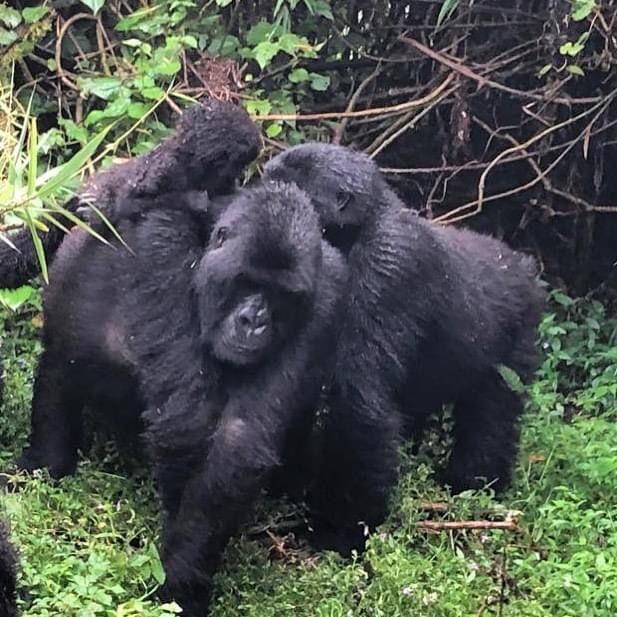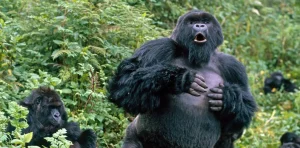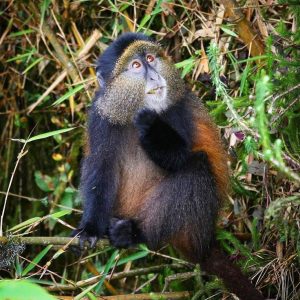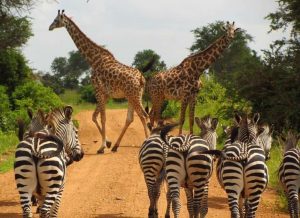Bwindi Impenetrable Forest in southwestern Uganda offers one of the most thrilling wildlife experiences in the world—tracking endangered mountain gorillas in their natural habitat. This ancient rainforest shelters nearly half of the world’s remaining mountain gorilla population, making it a top destination for conservation-focused travel. Gorilla Families Are in Bwindi Impenetrable Forest
Many travelers ask a critical question before visiting: How many gorilla families can you find in Bwindi Impenetrable Forest? This article answers that question and dives into everything you need to know about gorilla families, trekking sectors, and why Bwindi remains a global conservation success story.
What Defines a Gorilla Family?
A gorilla family, or group, consists of individuals who live together under the leadership of a dominant silverback male. These families include adult females, infants, juveniles, and sometimes subordinate silverbacks or blackbacks. The silverback leads the group, defends it, and decides where to feed, rest, or travel.
Mountain gorillas live in tight-knit family units, and they form lifelong bonds. Each family operates in its own territory within Bwindi, and conservationists monitor them closely to ensure their safety.
How Many Gorilla Families Live in Bwindi?
Bwindi Impenetrable Forest hosts over 50 known mountain gorilla families. Out of these, 26 families are habituated for tourism and research. The rest remain wild or semi-habituated and do not encounter tourists. Gorilla Families Are in Bwindi Impenetrable Forest
These 26 habituated groups are available for gorilla trekking, and they make Bwindi the best place in the world to observe mountain gorillas in the wild.
Which Gorilla Families Can You Trek in Bwindi?
You can trek 26 different habituated gorilla families across four sectors in Bwindi Impenetrable National Park. Each sector contains unique groups and offers a distinct trekking experience.
1. Buhoma Sector (North Bwindi):
- Mubare (the first habituated family in Uganda)
- Habinyanja
- Rushegura
- Katwe
- Muyambi
2. Ruhija Sector (East Bwindi):
- Bitukura
- Oruzogo
- Mukiza
- Kyaguliro (research-focused group)
3. Rushaga Sector (South Bwindi):
- Nshongi
- Bweza
- Busingye
- Kahungye
- Mishaya
- Rwigi
- Mucunguzi
- Kutu
4. Nkuringo Sector (Southwest Bwindi):
- Nkuringo
- Bushaho
- Christmas
- Posho
Tourists often base their treks on preferred difficulty levels, lodge locations, and the availability of permits within each sector.
How Does Uganda Manage Gorilla Trekking?
Uganda Wildlife Authority (UWA) manages gorilla tourism with strict conservation protocols. They limit each habituated gorilla group to one group of eight tourists per day, and treks follow ethical guidelines to minimize stress on the animals.
When booking a gorilla permit, you can request a specific sector or group. However, park rangers make the final assignment based on fitness levels, permit availability, and logistics. For better control, book your trekking permit early and use a trusted local tour operator.
How Do Gorilla Families Form in the Wild?
Gorilla families form through natural social dynamics. As young silverbacks mature, they often leave their natal group to form a new one. Sometimes, large groups split into smaller ones due to internal rivalry or population pressure. Over time, new groups form and establish territories within the forest.
Conservationists and researchers monitor these groups closely to track population changes, health, and interactions.
What Is Gorilla Habituation and How Does It Work?
Gorilla habituation is a slow and sensitive process that introduces wild gorillas to human presence. Conservation teams, trackers, and scientists spend 2–3 years gradually building trust with a group until it becomes comfortable with close human observation.
You can join this unique process through the Gorilla Habituation Experience in the Rushaga sector. Instead of the usual one-hour visit, this experience gives you four hours with a semi-habituated family and deeper insight into their behaviors and social dynamics.
How Many Mountain Gorillas Live in Bwindi?
The most recent mountain gorilla census (2018) estimated that Bwindi shelters over 459 individuals, making it the single largest population of mountain gorillas anywhere on Earth.
Globally, the total mountain gorilla population has reached approximately 1,063 individuals, with the remaining populations living in the Virunga Massif shared by Rwanda, Uganda, and the Democratic Republic of Congo.
What Role Does Tourism Play in Gorilla Conservation?
Tourism directly supports gorilla conservation. Revenue from gorilla permits funds:
- Anti-poaching patrols
- Veterinary support for sick or injured gorillas
- Community development projects
- Environmental education programs
The Uganda Wildlife Authority also returns a portion of permit fees to local communities. This sharing model fosters cooperation, reduces deforestation, and empowers families living near the park to protect the gorillas.
Can You Choose Which Gorilla Family to Visit?
You can request a preferred sector or family, but the Uganda Wildlife Authority assigns you a group based on conditions at the time of trekking. Rangers consider your fitness level, hiking ability, and the location of different groups on that day.
Booking early increases your chances of trekking a specific group. Tour operators can help guide you toward a sector with suitable difficulty and preferred accommodation.
When Should You Visit Bwindi for Gorilla Trekking?
Visit Bwindi during Uganda’s dry seasons for the best trekking conditions:
- June to September
- December to February
During these months, the trails stay dry and passable, and gorilla sightings remain excellent.
If you visit during the wet seasons—March to May or October to November—you’ll enjoy lush landscapes and fewer tourists. However, prepare for slippery trails and unpredictable weather.
What Should You Bring for a Gorilla Trek?
Pack wisely for your gorilla trek to stay safe and comfortable in the forest. Bring:
- Waterproof hiking boots
- Long-sleeved shirts and long trousers
- Rain jacket or poncho
- Garden gloves
- Hat and sunglasses
- Insect repellent and sunscreen
- Camera (no flash)
- Daypack with snacks and water
- Walking stick (provided by lodges or the park)
Dressing in layers helps you adjust to the forest’s changing temperatures.
Why Bwindi’s Gorilla Families Matter
Bwindi Impenetrable Forest stands as a beacon of hope for wildlife conservation. Its 26 habituated gorilla families offer travelers a life-changing opportunity to connect with some of the planet’s most intelligent and majestic creatures.
Each gorilla group tells a unique story—of survival, leadership, parenting, and play. As you trek through thick jungle trails to meet these families, you don’t just witness wildlife; you support a movement that protects biodiversity and uplifts local communities.
Plan your gorilla trek in Bwindi today, and experience one of the most powerful wildlife encounters on Earth. Gorilla Families Are in Bwindi Impenetrable Forest




